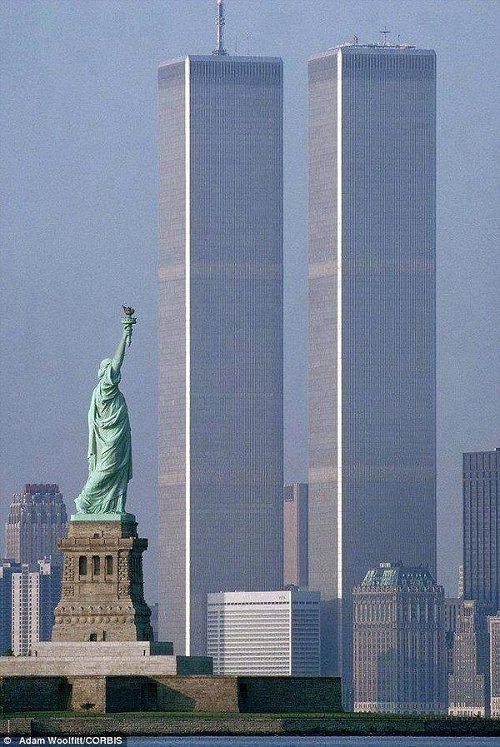

The former condition, Fowler explained, depends on specifying strong vertical columns that can efficiently transmit the mass of the building to the ground. The late Seattle-based architect Minoru Yamasaki designed the World Trade Center.Īs with all large buildings, the main structural engineering design criteria for the facility's 1,362-foot-tall south tower and 1,368-foot-tall north tower centered on two things: ensuring resistance to the gigantic gravity loads of the buildings themselves as well as to sideways or lateral forces caused by high winds and earthquakes, which can generate huge overturning forces at the bases. Robertson Associates, the current structural consultants to the WTC. He is currently principal partner at Leslie E. Robertson, then the project manager, was the engineer most responsible for the superskyscraper's design, Fowler noted. "As the Trade Center was so much lighter in comparison to earlier designs, it was a watershed building in the history of skyscrapers," he added. Fowler was then a junior member of the WTC's engineering firm of record, Worthington, Skilling, Helle & Jackson, later renamed Skilling Helle Christiansen Robertson.

"Though the twin towers were not much taller than their famous uptown predecessor, the Empire State Building, the World Trade Center rose during the late 1960s, a new era of construction characterized by rapidly erected, lightweight steel structures rather than heavy masonry walls," explained Robert Fowler, senior engineer at the structural engineering firm of McNamara and Salvia. Clearly, prevention is the best defense against this kind of assault. No existing or foreseeable economically viable skyscraper structure, they agreed, could have withstood this kind of cruel onslaught. Significantly, the panel stated that any mitigating reinforcements and redundancies added to these buildings could have only delayed the inevitable failure, though they would have bought more time for the evacuation of the occupants.
ATTACKING THE TOWER FREE
Once high temperatures weakened the towers' supporting steel structures, it was only a matter of time until the mass of the stories above initiated a rapid-sequence "pancaking" phenomena in which floor after floor was instantly crushed and then sent into near free fall to the ground below.

The main culprits in bringing the famously lofty buildings down, they concluded, were the two intensely hot infernos that erupted when tens of thousands of gallons of aviation fuel spilled from the doomed airliners. Their starkly sobering analyses highlighted the vulnerabilities of ultra-tall buildings to fire and pointed out steps that could be taken to lessen them.Īfter first describing the highly redundant structural system that kept the 110-story twin towers standing for decades despite hurricane-force winds and a terrorist truck bomb, the engineers then delineated how that system was breached and finally overcome on that fateful day when America was attacked. A panel of Boston area-based civil and structural engineers convened to discuss the fate of the superskyscrapers, struck by hijacked passenger planes, in front of an overflow audience on the campus of the Massachusetts Institute of Technology. The mechanisms by which these huge and seemingly solid edifices suddenly collapsed, snuffing out the lives of thousands, was the subject of a preliminary postmortem conducted last week in Cambridge, Mass. When New York City's giant World Trade Center towers plunged to earth following successive suicide terrorist attacks on September 11th, the world was confronted with one of most shockingand sickeningsights of modern times. In order to build the towers, engineers needed to dig down 70 feet to reach bedrock.BEFORE SEPTEMBER 11, 2001, the twin towers of the World Trade Center seemed a permanent part of the Manhattan skyline. Until the construction of the Sears Tower, the towers were known as the tallest buildings in the world at 1,360 feet. They were the hub of the bustling Financial District, a top tourist attraction and a symbol of America. The towers were built in 1973 and meant to symbolize globalization and America's economic power and prosperity.Īt 110 stories each, the buildings were used for businesses and accommodated 50,000 workers and 200,000 daily visitors. 10:28am - The North Tower fell not long after.9:59am - The South Tower was the first to collapse after burning for around 56 minutes.10:03am - A fourth plane crashed in Pittsburgh, Pennsylvania as passengers fought with the hijackers on the flight.9:37am - Later, a third plane hit the Pentagon in Washington DC.9:03am - Just 18 minutes later, a second plane crashed into the South Tower.8:45am - The first American Airlines plane hit the North Tower of the World Trade Center.


 0 kommentar(er)
0 kommentar(er)
